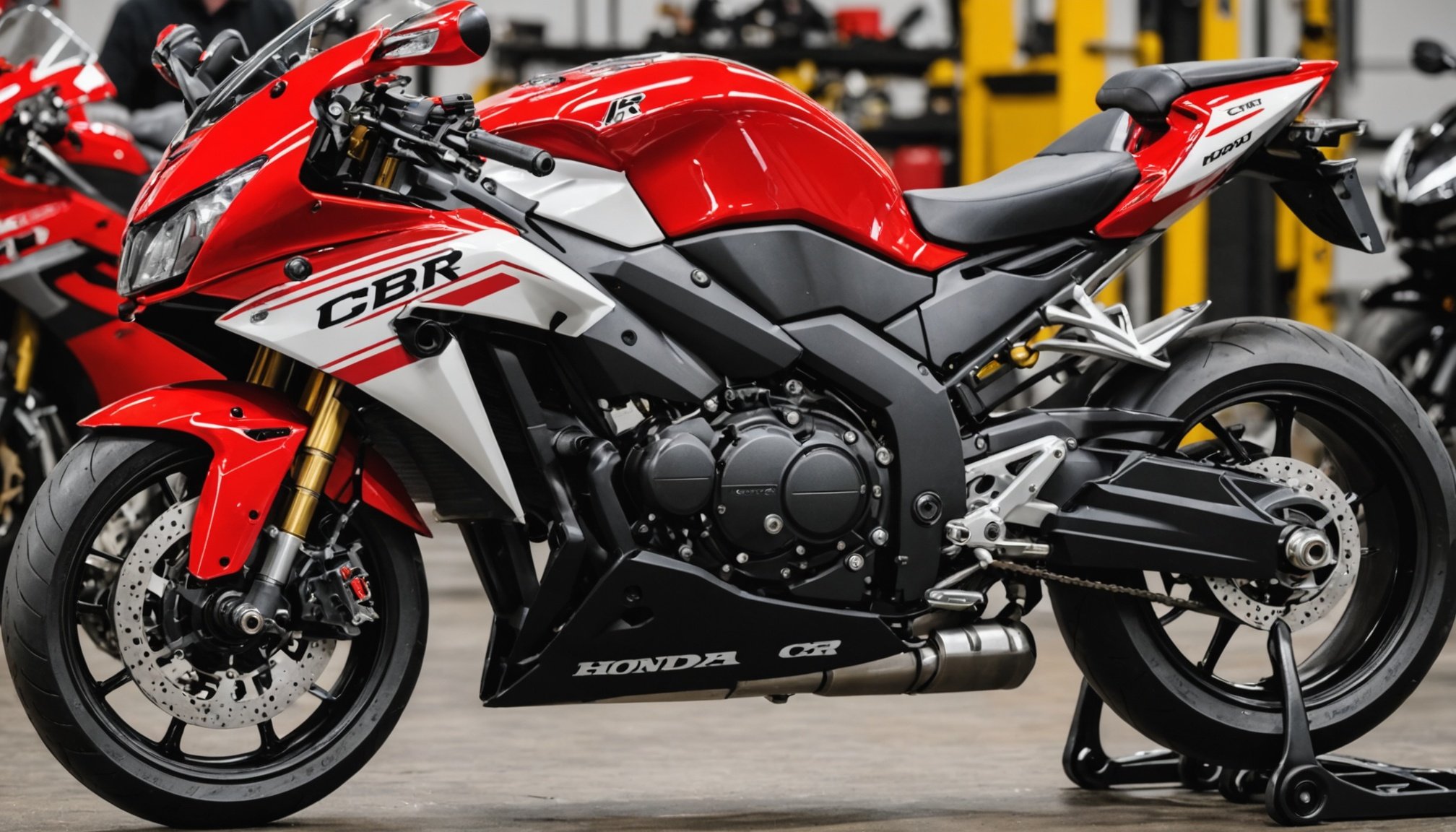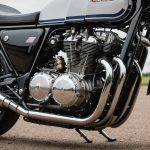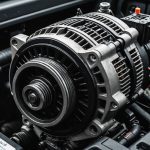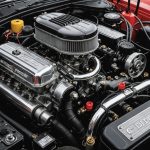Importance of Valve Clearance
Understanding the importance of valve clearance is crucial for maintaining optimal engine performance in the Honda CBR1000RR. Valve clearance refers to the small gap between the valve stem and the rocker or cam that controls its opening and closing. This gap is paramount as it ensures that valves open and close efficiently, allowing the engine to breathe properly.
Incorrect valve clearance can result in noticeable impacts on engine performance. When the clearance is too tight, it may prevent the valves from fully closing, leading to power loss and potential engine damage. Conversely, excessive clearance can cause noisy operation and reduced efficiency, ultimately affecting the engine’s longevity and performance.
In parallel : Step-by-Step Guide to Upgrading Your Yamaha MT-07 with an Aftermarket Windscreen for Enhanced Wind Protection
Regular inspection and adjustment of valve clearance play a significant role in the maintenance of the Honda CBR1000RR. By routinely checking and setting the appropriate valve clearance, riders ensure that the engine operates smoothly and efficiently. This not only enhances performance but also prolongs the lifespan of the engine by preventing premature wear and tear.
Owners of the Honda CBR1000RR should prioritise this aspect of maintenance to keep their motorcycles in peak condition. Consistent attention to valve clearance translates into better performance, longer engine life, and a more enjoyable riding experience.
In parallel : Ultimate Guide to Conducting a Compression Test on Your Honda CBR600RR for Engine Health Assessment
Necessary Tools and Safety Precautions
Before diving into valve adjustments on your motorcycle, it’s essential to prepare. Having the right tools for valve adjustment not only ensures efficiency but also preserves the integrity of your bike. Primarily, you’ll need a set of feeler gauges, a ratchet set, and torque wrenches. Socket sets and a flathead screwdriver are also crucial. Equally important are locknut adjusters, which streamline the process of tweaking those valves with precision.
Addressing safety precautions is non-negotiable. Ensure you’re donning safety goggles to protect your eyes from dust and debris. Wearing gloves shields your hands from sharp components and grease. It’s wise to disconnect the battery before commencing any work to prevent accidental sparks.
Having a dedicated motorcycle maintenance workspace enhances your efficiency. Opt for a well-lit area with ample space so you can move freely. Secure your motorcycle on a stable stand to prevent tipping. Keeping the floor clear of tools minimises tripping hazards, while organising your toolbench allows you to easily access the necessary equipment as you work.
Step-by-Step Inspection Process
Ensuring your Honda CBR1000RR runs smoothly involves understanding how to inspect valve clearance. This detailed process can seem daunting, but with a clear plan, it becomes manageable and rewarding.
Preparation for Inspection
Before diving into the valve measurement process, gather the necessary tools: wrenches, feeler gauges, and a torque wrench. Secure a clean workspace to prevent debris from interfering with your valve measurement process. Ensure the engine is at room temperature to avoid inaccurate readings due to metal expansion.
Removing Valve Covers
Begin by safely dismantling the components obstructing the valve covers. Carefully remove the covers, taking note not to damage any surrounding parts. Use a gentle approach to protect the integrity of your motorcycle. It’s crucial for preserving the engine’s health and smoothly proceeding with the inspection of valve clearance on your Honda CBR1000RR.
Measuring Valve Clearance
With the covers removed, it’s time for the essential task: measuring valve clearance. Insert feeler gauges between camshaft lobes and valve shims. Compare the thickness of the feeler gauge that fits without force against Honda specifications. Ensuring accurate measurements is vital for preventing engine issues and maintaining peak performance of the Honda CBR1000RR. Adjust clearances as needed, and reassemble components carefully to conclude the inspection.
Adjusting Valve Clearance
Proper Honda CBR1000RR maintenance involves periodic checking and adjusting of valve clearance to ensure optimal engine performance. This process might appear challenging, but with the right clearance adjustment techniques, it becomes manageable.
Identifying the Need for Adjustment
Before proceeding with an adjustment, identify signs indicating that a valve adjustment is necessary. Symptoms typically include unusual engine noise, reduced performance, or difficulty starting the motorcycle. Inspect the valve train carefully, noting any discrepancies or wear that might suggest immediate attention. Address minor manifestations promptly to avoid escalating issues.
Adjustment Procedures
To adjust valve clearance, start by ensuring the engine is cool. You will need a feeler gauge to measure the existing gap. Reference the owner’s manual for specific clearance measurements required for the Honda CBR1000RR. Adjust each valve systematically, using the gauge to verify accuracy. This precision ensures that the adjustments fulfil the engine’s specifications and performance requirements.
Reassembling Components
After completing the adjustment, reassemble the components with care. Ensure all parts, including the valve cover and any related seals, are properly secured to prevent future leaks or mechanical issues. Recheck all connections, verifying that no tools or debris remain. Run the engine briefly to confirm the successful reassembly and adjustment of components.
Common Troubleshooting Tips
Identifying issues with valve adjustment troubleshooting on a Honda CBR1000RR is crucial for maintaining optimal performance. Riders often face common issues such as mismeasurement or interference during inspections. These problems can lead to engine inefficiencies or even damage. To address these concerns, precise measurement of valve clearance is vital. Using the correct feeler gauge ensures accuracy, avoiding potential interference problems.
When encountering mismeasurements, rechecking the valve clearances with a micrometer caliper can aid in correcting any discrepancies. Additionally, using high-quality tools is an essential maintenance tip to ensure precision and durability. If interference occurs, often due to exceeding or underestimating clearance specifications, make meticulous adjustments to align with manufacturer guidelines.
Preventive measures play a significant role in circumventing these issues. Regularly schedule inspections to monitor and maintain valve clearances within specified limits. Keep detailed records of past maintenance to recognise patterns or recurrent problems.
In summary, conduction proper valve adjustments on the Honda CBR1000RR involves understanding and addressing recurring common issues. By employing accurate measuring techniques and committing to consistent upkeep, riders can enhance their vehicle’s performance and longevity.
Estimated Time for Maintenance Task
When it comes to Honda CBR1000RR service time, understanding the average time estimate for valve adjustment is crucial for planning. Typically, a complete inspection and adjustment can take anywhere from two to four hours. However, several factors might influence the maintenance duration.
The experience level of the technician plays a significant role. A skilled technician familiar with the model may complete the task more efficiently. Moreover, the condition of the motorcycle, including factors like the wear and tear of components, can add time to the process. Additional adjustments or unforeseen issues can extend the duration.
Regularly scheduling maintenance intervals is vital. This ensures consistent upkeep, which helps in maintaining optimal performance and extending the bike’s lifespan. Sticking to these schedules might help streamline the process, potentially shortening the time needed for each session.
By accounting for these variables, Honda CBR1000RR owners can better estimate how much time to set aside for maintenance. This proactive approach helps manage expectations and enables owners to keep their motorcycles in top condition without unnecessary delays.
Diagrams and Illustrations
Visual resources can significantly enhance the understanding of technical tasks like valve clearance adjustments. Clear and detailed valve clearance diagrams are indispensable, offering a step-by-step visual guide to assist enthusiasts and mechanics alike. These diagrams simplify the process, depicting each component’s position and how they work together. Through concise schematics, users can see which bolts to adjust and ensure precision throughout each phase.
For a specific motorcycle like the Honda CBR1000RR, illustrations are even more critical. High-quality Honda CBR1000RR illustrations demonstrate processes unique to the model, ensuring DIYers can perform tasks accurately without unnecessary guesswork. Such illustrations might include cross-sectional views that showcase component placement and interaction within the engine—a great aid for both novices and experienced individuals.
Including maintenance visuals in your toolkit brings the advantage of reinforcing instructions provided in text form. These visuals create a logical flow, which is crucial when tackling complex tasks. This approach boosts confidence, minimises errors, and enhances learning by mapping out every required move clearly. Using these resources, even beginner DIY enthusiasts can execute maintenance tasks effectively, gaining hands-on experience while learning through visual understanding.











